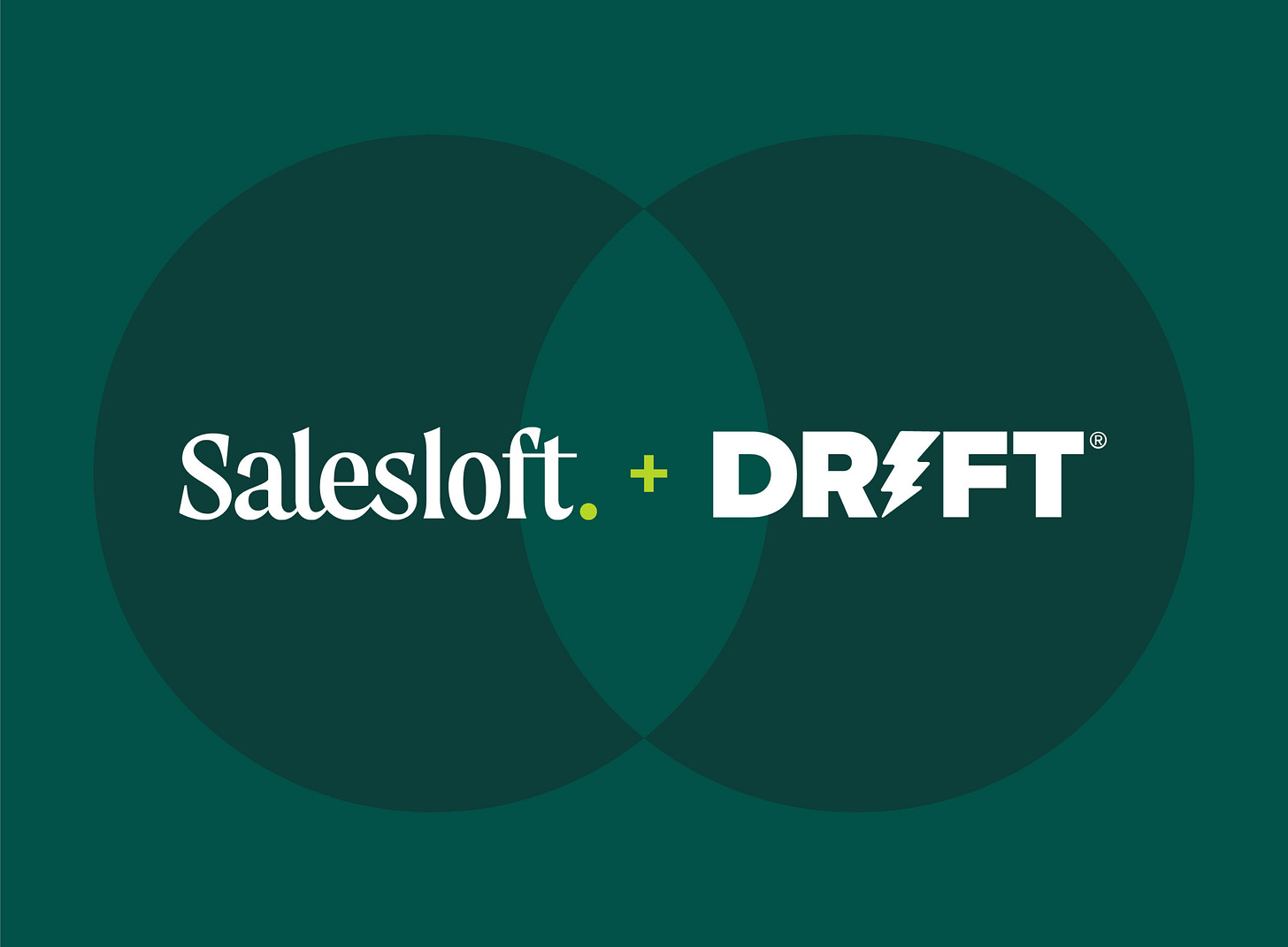#21 - Drift, Salesloft & the Great Consolidation
Salesloft acquired Drift on 2/13/24. It was announced with more of a whimper than a thud.
Vista Equity bought both companies (independently) at the height of the COVID boom for billions of $$’s.
Drift is a chatbot that helps turn website visitors into inbound leads, and Salesloft is a sales execution platform, helping reps automate high-volume, cold outbound call & email sequences.
They both enjoyed significant growth during the 2010’s as VC firms minted dozens of B2B tech companies daily. The reps at those companies needed tools like Drift + Salesloft to capture leads and execute against pipeline conversion.
Unlike their competitors who purposefully took a step back to experiment with other markets, both platforms (and Drift especially) chose to stay the course and maintain their lead in the VC-backed, B2B Tech market segment.
The problem? While that segment was clearly the most valuable during ZIRP, when the party was over, the music stopped, and sales teams hollowed out.
The per license model became a lot less lucrative. Fewer reps meant fewer licenses and significantly less revenue.
Churn became a major issue, too.
And without any foothold in other industries, customer acquisition languished and with it any hope of additional growth.
Information is private, but I imagine Salesloft bought Drift for significantly less than the Billions of $$’s Vista paid for Drift two and a half years ago.
What’s important to remember is that this is not a company issue. Both companies operated well in the market they operated in - their fundamentals were sound.
This is a market issue that will not rebound ahead of another boom cycle.
During this bust, companies have learned how to operate more efficiently and grow with fewer reps. So any Sales & Marketing company saddled with a “per license” model will languish.
Zoominfo is the only public company we can point to where we can see evidence of this. And they got smacked in Q2.
They’ve since recovered as a result of layoffs and other financial engineering tools designed to obfuscate underlying issues, but the fact remains that companies like Salesloft, Drift, Gong.io, Outreach, Seamless.ai, etc. - the ones that grew super fast due to the incestual VC-backed B2B tech ecosystem, are extremely vulnerable.
Efficient growth means there will be far fewer sales reps employed by companies. These tools and platforms must generate growth based on other revenue models.
Clay.com may signal that future business model. They charge on a consumption basis, so, the more you use it the more they can charge, but you are only using it if you see value in the product.
Difficult to forecast growth in quarterly board meetings without annual contracts, but VC’s may not be part of the equation anymore if small companies can leverage AI and run an operationally-efficient business without needing to raise money.
Good for customers, good for companies, but not good for VC’s. I for one can certainly live with that.


